The decisive argument when choosing: the efficiency of heating batteries of different types and other characteristics
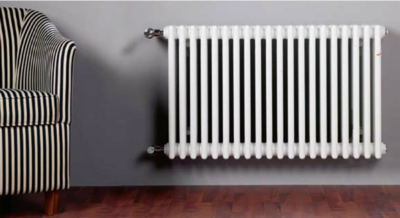
The construction market offers users many types of radiators for heating systems.
They are different from each other material of manufacture, appearance and characteristics.
Such a variety of products allows ordinary people to choose the right option for their home.
Designations of radiators according to GOST
The battery characteristics correspond to the established state standard.
What is the efficiency of a steel product?
The radiator, made of steel, is two welded plates of the same size. Inside the structure are located copper tubes, which are connected to each other by mesh plates.
Advantages of steel batteries:
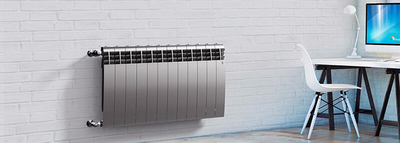
- designs are presented on the market different sizes, which allows the user to select a product suitable for the area of the room;
- do not require special care and easy to clean with a regular detergent;
- possess light weight;
- heat up and cool down over time short period;
- good heat exchange;
- small internal volume - plate, size 500x500 holds about 4 liters of coolant;
- acceptable price;
- attractive design, which will fit into any interior and will not require the need to cover the radiator with special devices.
Disadvantages of products:
- are not resistant to water hammer, so if such a problem occurs, swelling and rupture will occur;
- low pressure;
- small dimensions through holes;
- give flow;
- You must not drain liquid from radiators for a long time.
Steel batteries are characterized by high efficiency. They contain a small amount of coolant and use it with maximum efficiency.
The average service life of such a battery is 15-20 yearsThe short service life is due to the material's tendency to rust.
Attention! This leads to rapid wear of the product. misuse.
The heat output of the device depends on the area of the plate, 1 m² produces 4 kW of heat. If a plate of size 2 is installed in the room 500x500 mm, then it will produce 1 kW of heat.
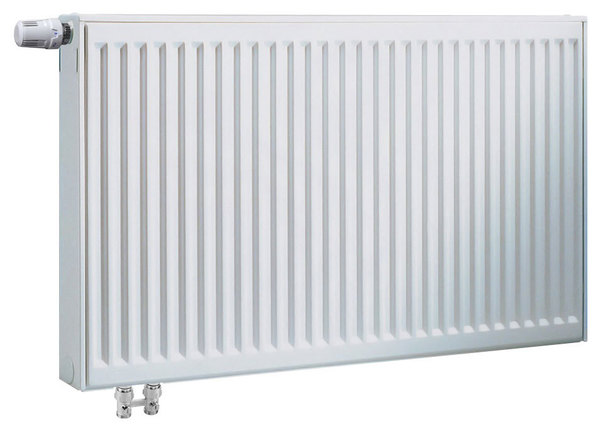
Photo 1. Steel panel radiator model VK-Profi 22 with bottom connection, manufacturer - "Buderus Logatrend".
Made of cast iron material
Cast iron radiators are installed in most cases in apartment buildings.
Advantages of radiators:
- cool down slowly and continue to heat the room even if the heating is briefly turned off;
- are used in any heating system;
- resistance to any kind corrosion;
- easy installation;
- resistance to water hammer;
- increased strength;

- power is adjustable by adding or removing sections;
- undemanding to quality of the coolant;
- not inclined to education blockages;
- they don't give leaks;
- they hold up well even high temperatures.
Flaws:
- heat up slowly, therefore the room is not heated for a long time, which results in an increase in energy consumption;
- when used internally for a long time dirt accumulates, which leads to deterioration of heating quality and reduction of service life;
- large volume of coolant - from 4.5 l per 1 kW;
- behind the design difficult to care for due to the rough surface and for the same reason, dust constantly accumulates on the product;
- high cost;
- unpresentable appearance, which does not fit into any design, which makes it necessary to cover the battery with special panels;
- poor convection and heating due to heat radiation, therefore, for high-quality heating, a battery with a large number of sections is required, especially if we are talking about a room with an impressive area;
- installation of the device is difficult due to high mass.
Cast iron batteries have an efficiency average. Due to slow heating, energy consumption (gas, electricity, etc.) increases.
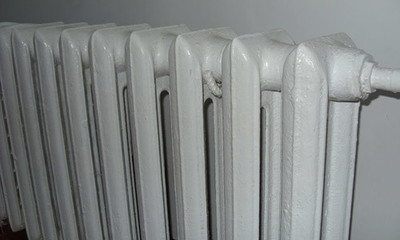
The service life of cast iron radiators is 25-35 years old.
This is an average figure.
Typically, such batteries last much longer, since the material is highly susceptible to corrosion.
The battery power depends on the number of sections. One section gives 0.14 kW heat. The more of them there are, the better the heating of the room will be.
Aluminum: service life and power in kW
There are two types of aluminum radiators:
- CastIn such batteries, each section is cast in one piece.
- ExtrusionThis product consists of three hermetically sealed elements.
Aluminum radiators also differ from each other in power and dimensions.
Advantages of the products:
- large dimensions through holes;
- high heating and cooling speed;
- light weight, which makes installation of products easier;
- opportunity temperature regulation by installing or dismantling sections;
- attractive appearance;
- do not require special care and can be easily cleaned from dirt with any cleaning agent;
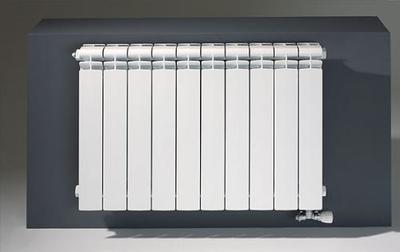
- acceptable price.
Flaws:
- can't be used acidic heat carriers;
- sensitivity to water hammer, which destroys the battery;
- inside the structure arise air locks, which increases the risk of corrosion;
- risk of occurrence leaks between sections.
The batteries have high Efficiency. They use a minimum of coolant for maximum heating of the room.
Aluminum batteries will last for 20-25 years old. Such a long service life is due to the internal resistance to corrosion.
One section of the battery has the power 0.1-0.2 kW. The larger the structure, the better the heating.
Bimetallic
This battery is a structure that contains a carbon steel element inside and aluminum on top.
Advantages of radiators:
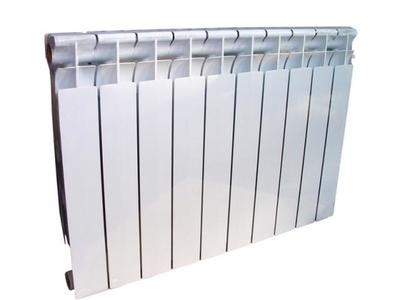
- high heat transfer;
- increased strength;
- good heating and cooling speed;
- easy weight;
- the products are used in any heating system;
- large dimensions of the inlet openings;
- inside the contour no air locks occur;
- attractive design.
Flaws:
- lack of rust resistance does not allow the coolant to be removed from the structure for a long time;
- high price.
Bimetallic batteries have high efficiency level. Small internal volume in 1.5 liters provides heating to the room with an average area.
The bimetallic radiator will last 25-35 years old. The metal is not subject to corrosion, therefore it has a long service life.
The radiator has good power. It is 1 kW per battery.
Convector
This device is an electric radiator for heating a room.
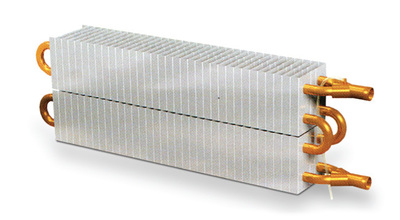
Advantages:
- simplicity in use;
- ecological purity;
- small dimensions;
- simplicity installation;
- stylish design;
- light weight.
Flaw - high cost of electricity.
The electric radiator has the highest Efficiency. It is 90%.
The operational period of the device is 5-10 years. Warranty period — 5 years.
Convector power — 1 kWOne radiator heats the room. in 15 m². If the area is larger, several devices are used for heating.
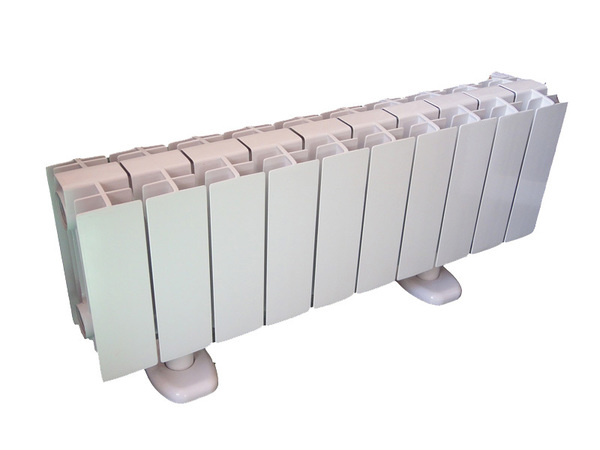
Photo 2. Radiator-convector Rondo-150 with 10 sections, power 950 W, manufacturer - "Tianrun Group LTD".
What does the efficiency of a heating battery depend on?
The efficiency of radiators depends on the method of their installation:
- the battery case is installed parallel to the floorto prevent air pockets from forming at the top point of the circuit;
- the distance between the bottom line of the product and the floor is 10 cm and the same indentation is made from the window;
- you can't place furniture closer, than 60 cm to the device;
- the distance from the side edge to the wall is 3 cm;
- it is mandatory to install it on the contour Mayevsky tap for releasing air.
The performance of batteries is affected by metal, from which the product is made. The best heat transfer is aluminum. In second place is steel. The thermal conductivity of this metal is increased by increasing the thickness of the radiator walls. Third place is occupied by cast ironIt has high thermal inertia and low heat transfer.
Useful video
Check out this video that discusses the pros and cons of different types of radiators.
Tips for choosing
The choice of radiator depends on heating systems, installed in the house. For an autonomous design, it is recommended to use batteries made of cast iron, steel and aluminum. Such products can easily withstand the pressure of the circuit.
In apartment buildings with central heating, cast iron or bimetallic products are installed. Such radiators will withstand increased circuit pressure and will last for many years.
The main criterion for choosing a battery is heat transfer. The temperature inside the room depends on this. Aluminum, steel and cast iron products have proven themselves well, so most users prefer them.







Comments